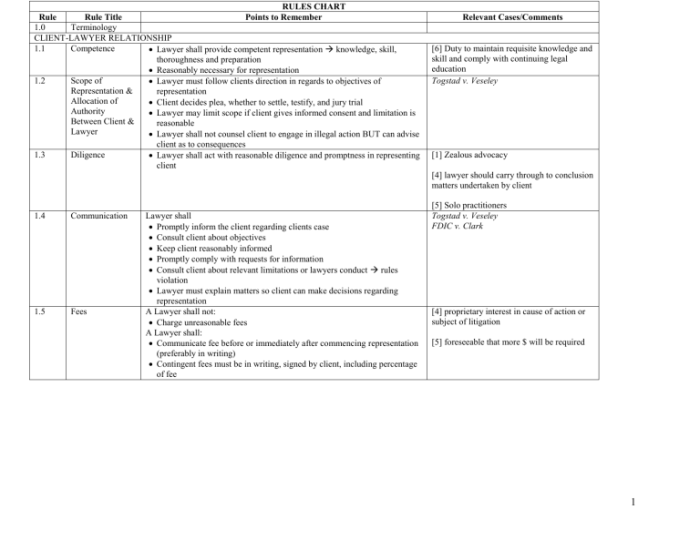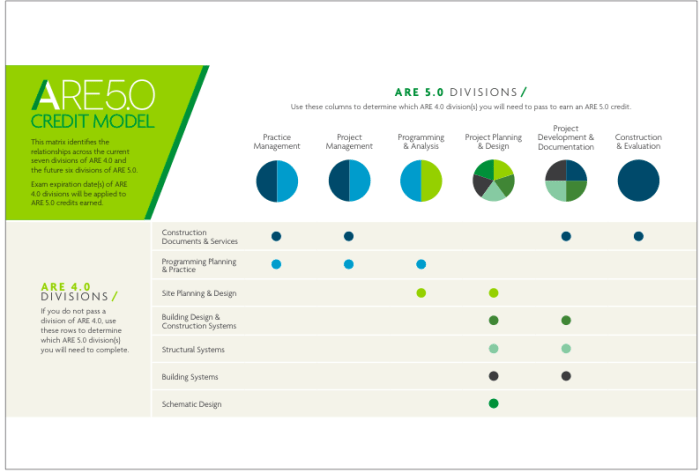The NCARB Model Rules of Conduct are the guiding principles that shape the ethical and professional conduct of architects. These rules provide a framework for architects to navigate complex professional situations, ensuring the integrity and safety of the built environment.
This comprehensive guide explores the key principles and values underlying the NCARB Model Rules of Conduct. We will delve into the ethical obligations that architects have to clients, the public, and the profession, emphasizing the importance of integrity, objectivity, and competence in architectural practice.
NCARB Model Rules of Conduct: An Overview

The NCARB Model Rules of Conduct provide a framework for ethical behavior for architects. These rules are designed to protect the public and promote the integrity of the profession. The rules are based on the principles of honesty, integrity, and competence.
Key Principles and Values
The NCARB Model Rules of Conduct are based on the following key principles and values:
- Honesty and integrity
- Competence and diligence
- Confidentiality and privacy
- Respect for the public and the profession
Examples of How the Rules Apply
The NCARB Model Rules of Conduct apply to a wide range of professional situations. For example, the rules prohibit architects from engaging in fraud or deception, from accepting bribes or kickbacks, and from practicing architecture without a license. The rules also require architects to maintain confidentiality of client information and to respect the public and the profession.
Ethical Obligations of Architects

Architects have a fundamental responsibility to uphold ethical principles in their professional practice. These obligations extend to their clients, the public, and the profession itself.
Maintaining integrity, objectivity, and competence is paramount in architectural practice. Architects must prioritize the interests of their clients, act impartially, and continuously develop their skills and knowledge.
Integrity
Architects must maintain the highest level of honesty and trustworthiness in all their dealings. They should avoid any actions that could compromise their integrity or the reputation of the profession.
- Uphold ethical principles in all aspects of practice.
- Be truthful and transparent in communications with clients and colleagues.
- Avoid conflicts of interest and disclose any potential conflicts promptly.
Objectivity
Architects should remain impartial and objective in their decision-making. They must not allow personal interests or biases to influence their professional judgment.
- Consider all relevant factors when evaluating design options.
- Seek independent advice when necessary to ensure objectivity.
- Avoid accepting gifts or favors that could impair their judgment.
Competence
Architects must maintain a high level of competence in their field. They should continuously update their knowledge and skills to ensure they are providing the best possible service to their clients.
- Stay abreast of industry best practices and technological advancements.
- Obtain appropriate training and certifications to enhance their skills.
- Seek feedback from colleagues and clients to improve their practice.
Conflicts of Interest
Architects must avoid any situations that could create a conflict of interest. This includes situations where their personal interests or the interests of another party could influence their professional judgment.
- Disclose any potential conflicts of interest to clients.
- Decline work if a conflict of interest cannot be resolved.
- Maintain confidentiality of client information.
Confidentiality
Architects must maintain the confidentiality of client information. This includes all information obtained during the course of their work, such as design plans, financial data, and personal information.
- Protect client information from unauthorized access.
- Use encryption and other security measures to safeguard data.
- Limit access to client information to those who need it.
Professional Responsibilities of Architects

Architects bear a great responsibility to the public, as their work can significantly impact the health, safety, and welfare of individuals and communities. Their professional responsibilities extend beyond the design and construction of buildings to encompass a range of ethical obligations.
One of the most fundamental responsibilities of architects is to provide competent services. This includes possessing the necessary knowledge, skills, and experience to fulfill their professional duties. Architects must stay abreast of current building codes, regulations, and industry best practices to ensure that their designs meet the highest standards of safety and quality.
Duty to Protect the Health, Safety, and Welfare of the Public
Architects have a paramount duty to protect the health, safety, and welfare of the public. This means considering the potential impacts of their designs on occupants, visitors, and the surrounding community. Architects must take reasonable steps to minimize risks and hazards associated with their work, such as ensuring proper ventilation, fire safety measures, and accessibility features.
The NCARB Model Rules of Conduct provide a framework for ethical behavior in the architecture profession. They cover a wide range of topics, including conflicts of interest, confidentiality, and professional development. Just like the DNA and RNA Venn diagram illustrates the similarities and differences between these two types of molecules, the NCARB Model Rules of Conduct help architects understand their ethical responsibilities and how to navigate the complexities of professional practice.
Importance of Continuing Education and Professional Development
The field of architecture is constantly evolving, with new technologies, materials, and design principles emerging regularly. To maintain their competence and provide the best possible services, architects must engage in ongoing continuing education and professional development.
- Continuing education helps architects stay informed about the latest advancements in their field.
- Professional development allows architects to enhance their skills and knowledge, enabling them to take on more complex and challenging projects.
Contribution to the Sustainability of the Built Environment
Architects play a crucial role in promoting the sustainability of the built environment. By incorporating sustainable design principles into their work, architects can reduce the environmental impact of buildings and contribute to a more sustainable future.
- Sustainable design practices can include using energy-efficient materials and systems, incorporating natural ventilation and lighting, and designing buildings to minimize waste and emissions.
- Architects can also advocate for policies and regulations that support sustainable building practices.
Enforcement of the Model Rules of Conduct

The NCARB Model Rules of Conduct are enforced through a process of investigation and disciplinary action. The National Council of Architectural Registration Boards (NCARB) is responsible for investigating and adjudicating complaints of violations of the rules.
NCARB’s Role in Enforcement
NCARB has a standing Committee on Professional Conduct that is responsible for investigating complaints and recommending disciplinary action. The committee is composed of architects from across the country who are appointed by the NCARB Board of Directors.When NCARB receives a complaint, it conducts an investigation to determine if there is sufficient evidence to support the allegations.
If the investigation finds that there is probable cause to believe that a violation has occurred, the committee will recommend disciplinary action to the NCARB Board of Directors.
Consequences of Violating the Rules, Ncarb model rules of conduct
The consequences of violating the Model Rules of Conduct can vary depending on the severity of the violation. Minor violations may result in a warning or reprimand. More serious violations may result in suspension or revocation of an architect’s license.
Quick FAQs
What is the purpose of the NCARB Model Rules of Conduct?
The NCARB Model Rules of Conduct provide a framework for ethical and professional conduct for architects, ensuring the integrity and safety of the built environment.
What are the key ethical obligations of architects?
Architects have ethical obligations to clients, the public, and the profession, including maintaining integrity, objectivity, and competence in architectural practice.
What are the professional responsibilities of architects?
Architects have professional responsibilities to provide competent services, protect the health, safety, and welfare of the public, and contribute to the sustainability of the built environment.
